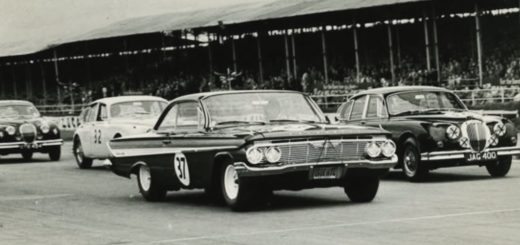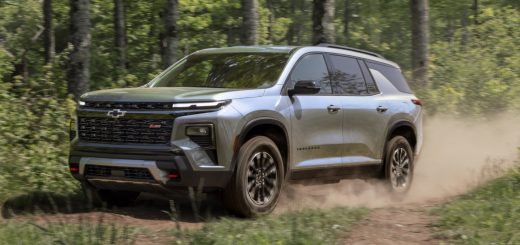With a full tank of gas, a jug full of water, a case full of photography gear, and a cell phone all neatly tied down in my new 2011 Chevy Cruze, I embarked on a one-day trip to put my new vehicle through the paces on some of Southern Colorado’s finest roads. Somewhere in the middle of my weekend adventure, I stumbled across an off-piste twistie that had my name written all over it. And so it began — the trip of a bone-stock 1.4 liter Cruze rallying up an unpaved path not five miles from the famed Pike’s Peak Hill Climb course.
Before going any further, I want to make it totally clear that I’m no professional rally driver. Heck, I’m not a professional driver of any kind. And that’s exactly how I approached this particular course — being careful not to push the Cruze beyond my driving skill set and end up as another statistic rolling off the side of the canyon. But the (optional) four-wheel disc brakes on the Cruze 2LT, coupled with the 17″ flangeless wheels wrapped in Bridgestone Blizzack winter tires, proved to be my most trusted companions when it came to abrupt and unexpected hairpin turns on the gravel terrain.
But even the best brakes in the world wouldn’t help unless the chassis is good enough. And in the case of the Cruze, it is. In fact, we’ve heard from several industry insiders that the Cruze platform holds the segment crown in torsional rigidity — meaning that it will react to the demand placed on the chassis with utmost speed and balance. The solid nature of the Cruze architecture delivered on its promise, with the Delta II-based sedan remaining concretely planted throughout the nigh seven-mile ascent, even through the hair pins. The shocks and the highly-acclaimed Z-Link rear suspension did their due diligence in absorbing most of the bumps, ridges, and whatever other imperfections exist on a non-paved road surface. But that’s not to say that the ride was in any way disconnected; to the contrary, I enjoyed the way in which the suspension kept me engaged and connected to the pavement gravel; it was definitely more BMW- than Lexus-like — and that’s a good thing.
Speaking of good things, it’s no secret that good visibility on a twisty off-piste course such as this one is key to, well, seeing where, exactly, you’re going. And the Cruze excelled in this department: this is no blind-spot-ridden Camaro with a-pillars thicker than some sumo wrestlers’ thighs. To the contrary, the Cruze has some of the best visibility and the least negative viewing space of most vehicles I’ve driven, especially compared to the Camaro that I was driving a few days prior to this excursion.
Helping handle the Cruze through the twisties was the steering wheel. The leather-wrapped unit in my 2LT is one of the best wheels I’ve ever held — it’s comfortable to hold, especially in the safety-prescribed 10-and-2 position, and is easy to flip for an abrupt 60-degree hairpin. But there’s something else about the Cruze’s steering wheel that isn’t directly apparent visually. One needs to spend a few good hours grasping this particular doughnut to really appreciate its functional beauty. In short, no other wheel of any car in the compact segment comes close to this wheel (and that includes the unit in the new Ford Focus).
Having climbed the seven miles off the beaten bath, it was time to turn around and come back down. The descent wasn’t as eventful as the climb, although a few tail drags on the red gravel were in order. I also encountered a deer, who — upon seeing the Cruze’s by-then filthy yet still menacing face — proceeded to run away in disgust (or maybe in fear). After making my way to the basin, I began to wonder how I would improve on the Cruze formula. Common sense would prescribe more power as well as an all-wheel drive system, perhaps packed into a high-performance (Z-Spec?) Cruze variant. Luckily, this is a case where common sense is spot on.
During the ascending portion of the trip, I couldn’t help but notice that the Cruze had virtually no power until reaching 2,500 RPM. And even with the transmission in tip-tronic mode, 2,500-5,500 RPM proved to be a loud but not very thrilling experience. In other words, the Cruze needs more horses and more pounds feet of twist, which I would derive from either one of two turbo-charged four pots from the GM parts bin — the 1.6 liter ECOTEC (that’s available in the Cruze’s cousin, the Opel Astra — as well as the Chinese-market Bumblebee edition Cruze), or — better yet — the 2.0 liter ECOTEC that is available in the Buick Regal Turbo or Regal GS.
The boosted 1.6 would make about 180 hp and 170 lb.-ft. of torque while the 2.0 turbo would be good for approximately 250 horses and 220 lb.-ft. or twist, although the latter is definitely capable of making more. Contrast that with the teensy fuel miser in the Cruze that’s the 1.4 liter ECOTEC good for 138 horsepower and 148 lb.-ft. of torque, and either the 1.6 or the 2.0 would make for very favorable improvements.
And since increasing power doesn’t accomplish squat without an effective way to deliver it to the road, I’d put my vote in for either an all-wheel drive system or a torque-vectoring setup like the one found on the 2012 Ford Focus. The former would increase the Cruze’s heft (and be more effective) while the latter would be lighter, less expensive to implement (and to sell), but less effective in sticking the Cruze to the ground.
It’s important to note that we have it on good account that the Delta II platform underpinning the Cruze is not physically capable of supporting an all-wheel-drive system. However, the Delta II-based Chevy Orlando will offer AWD as an option — so make of that what you will. Perhaps even more importantly, the addition of an all-wheel drive system and a more potent powerplant would result in Chevy effectively entering into the compact performance space that’s currently dominated by the likes of the Subaru WRX/WRX STi and Mitsubishi Lancer EVO/Lancer RallyArt. Considering the loyal following of such vehicles, especially in the young tuner circles, I’d recommend the move wholeheartedly.
All in all, the Cruze (and I) lived to tell the tale — even though neither of us were really intended for off-asphalt rally-like performance. It was still light out when I arrived home after a hefty Chipotle meal. After soaking the Cruze in some nice soap suds and drying it off with two über chamois, I was just getting ready to whip out the clay bar… but decided against it, instead calling it a day and leaving the Cruze in the garage for the night.
[nggallery id=342]














Comments
Why test the Cruze off road ? The Chevrolet Cruze is not a off road vehicle , I have a 1.8 LT (Korean version) AT and its drives very well and I have not the the highly-acclaimed Z-Link rear suspension……
For the sake of fun driving! The road wasn’t “off road” it was just covered with the red gravel as you can see in the pics. It’s not the same as taking a Hummer and beating the life out of it in the mud. It wasn’t my intention to even do that, but the road looked interesting.
Thank you for sharing excellent informations. Your website is very cool. I am impressed by the details that you